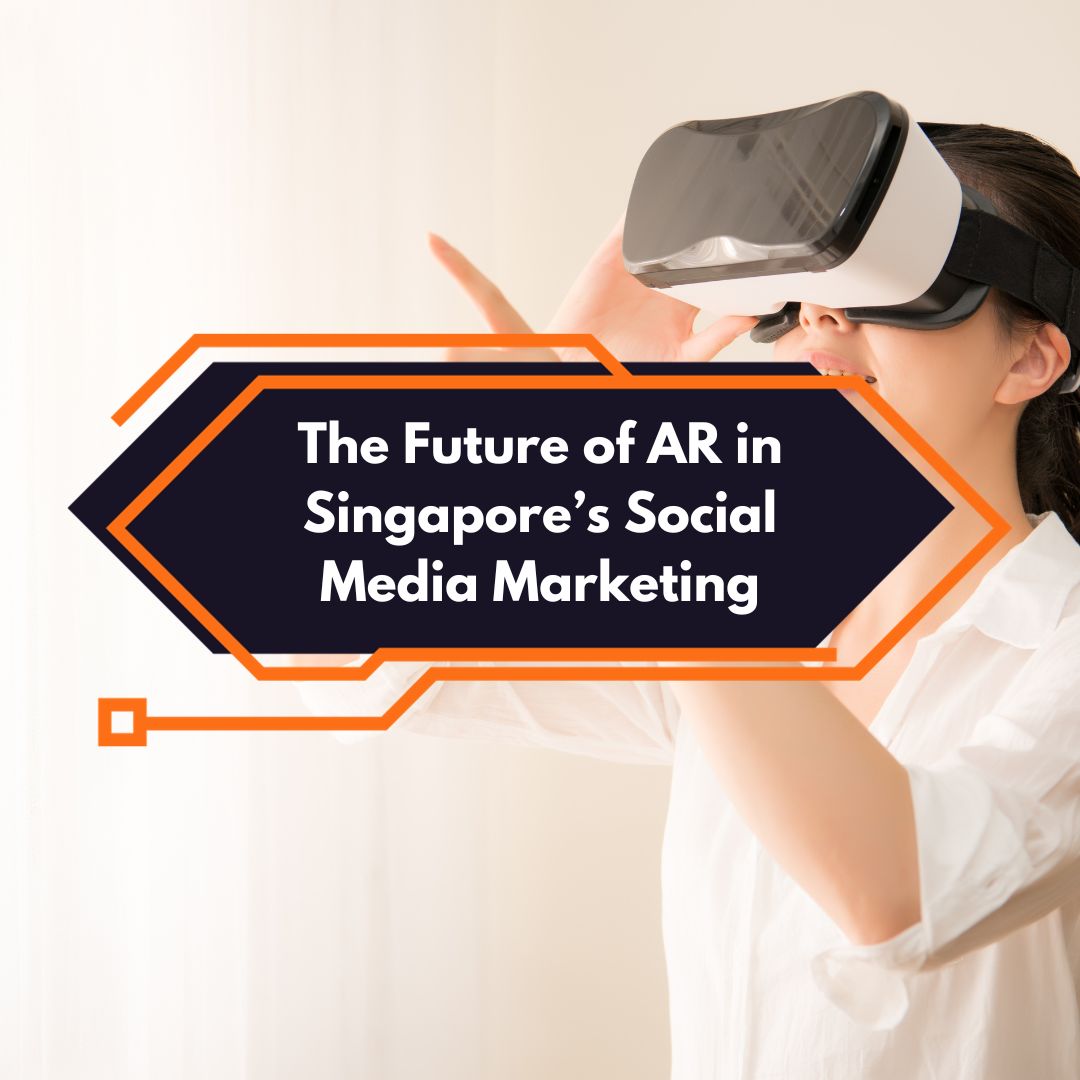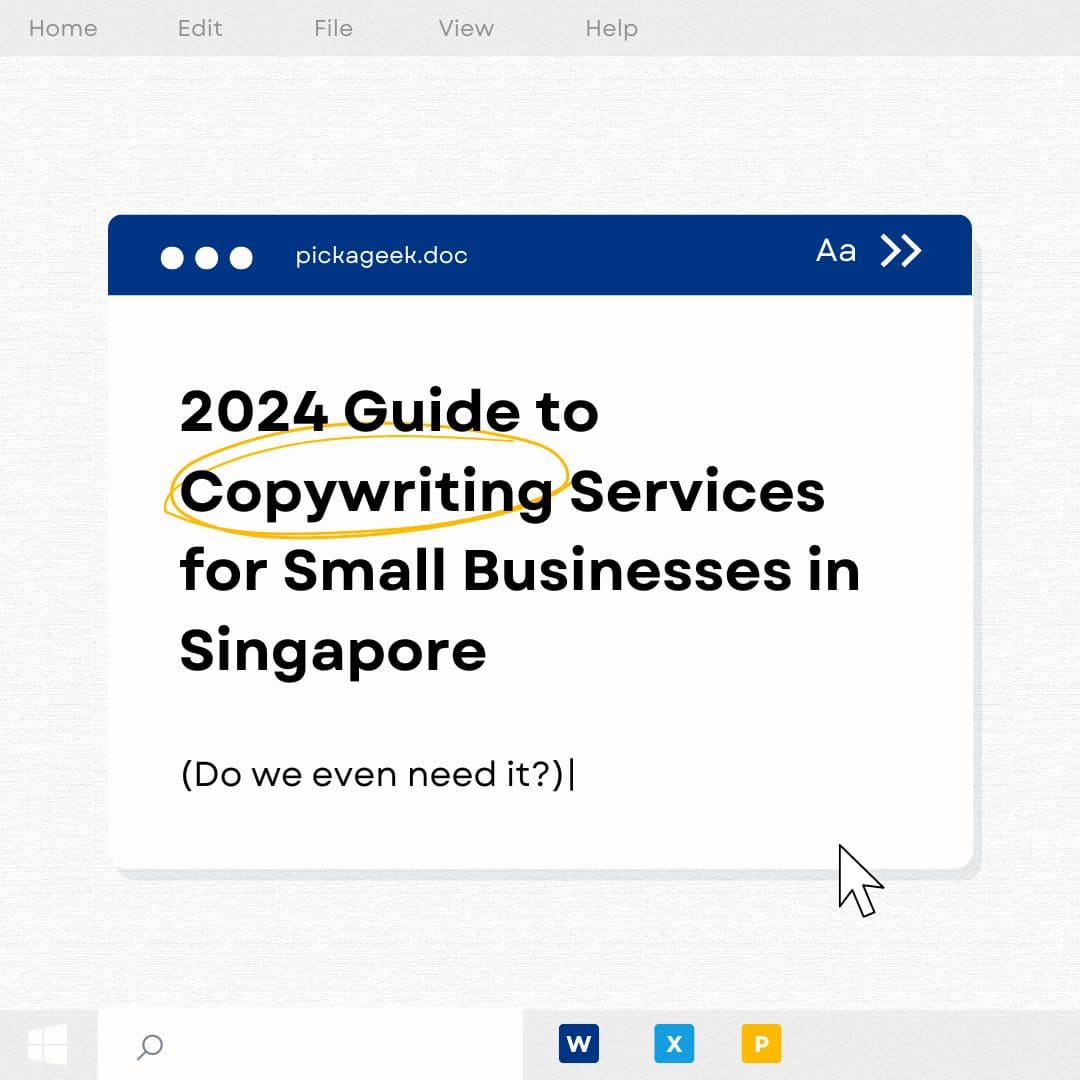What is the Google Sandbox? The term "Google Sandbox" refers to a speculated phase where…

The Future of AR in Singapore’s Social Media Marketing
The Future of AR in Singapore’s Social Media Marketing
Augmented reality (AR) is a technology that enhances the real world with digital elements, such as images, sounds, or animations. AR allows users to interact with both physical and virtual environments, creating immersive and engaging experiences. AR has been gaining popularity in various fields, such as education, entertainment, and gaming. But one of the most promising areas for AR is social media marketing.
Singapore is at the forefront of adopting and developing Augmented Reality (AR) technology. According to Statista, the AR & VR market in the country is projected to reach a revenue of US$119.4 million by 2023. Furthermore, it is expected to show an annual growth rate (CAGR 2023-2027) of 14.40%, resulting in a projected market volume of US$204.5 million by 2027. This growth is primarily driven by the increasing demand for innovative and interactive marketing solutions, as well as the availability of advanced infrastructure and devices.
AR has become a powerful tool for social media marketing, as it offers several benefits for both marketers and consumers. AR can help marketers to:
- Increase brand awareness and reach by creating viral and shareable content.
- Enhance product visualisation and demonstration by allowing users to try on or test products virtually.
- Boost customer engagement and loyalty by providing personalised and gamified experiences.
- Improve conversion and sales by reducing friction and increasing trust.
On the other hand, AR can help consumers to:
- Discover and explore new products and services in a fun and convenient way.
- Make informed and confident purchase decisions by comparing and evaluating options.
- Express their creativity and identity by customising and co-creating products.
- Connect and interact with other users and brands through social features.
Understanding AR and Its Marketing Potential
Augmented reality is a technology that overlays digital information on the user’s view of the real world, creating a mixed reality. AR can be accessed through various devices, such as smartphones, tablets, smart glasses, or headsets. AR can also use different techniques, such as marker-based, markerless, or location-based, to trigger the digital content.
Augmented reality has a huge potential in marketing, as it can create unique and memorable consumer experiences. According to a report by Statista, the global AR advertising revenue is projected to reach US$8.8 billion by 2023, up from US$1.5 billion in 2019. Another report by eMarketer estimates that the number of AR users in the US will reach 83.1 million by 2021, accounting for 25.2% of the population.
Augmented reality can also influence consumer behaviour and perception, as it can appeal to their emotions and senses. According to a study by Mindshare and Zappar, AR can increase dwell time by 85%, emotional response by 70%, and purchase intent by 72%. Another study by Accenture found that 61% of consumers prefer brands that offer AR experiences, and 47% of consumers are more likely to buy from brands that use AR.
In Singapore, Augmented reality is also becoming more popular and prevalent among consumers and marketers. According to a survey by YouGov, 63% of Singaporeans have used AR before, and 53% are interested in using it in the future. The survey also found that 40% of Singaporeans are more likely to buy a product if they can see it in AR, and 35% are more likely to recommend a product if they can share it in AR.
Case Studies: AR in Singapore
There are many examples of successful AR campaigns in Singapore, showcasing the creativity and innovation of local marketers. Here are some of the most notable ones:
- Pizza Hut Singapore launched an AR campaign in 2020 to celebrate its 40th anniversary and to introduce its new menu, “Newstalgia”. The campaign used Snapchat’s Lens Studio to create an AR lens that allowed users to scan a Pizza Hut box and unlock a retro-themed game, where they could collect pizza slices and toppings to win vouchers and prizes. The campaign also featured a nostalgic jingle and a retro logo, evoking the brand’s heritage and history. The campaign achieved over 2.3 million impressions, 1.1 million opens, and 300,000 plays in just four weeks.
- Blippar, an AR technology company, partnered with Magnum, an ice cream brand, and Mindshare, a media agency, to launch in Singapore in 2018. The campaign used Blippar’s AR digital placement (ARDP) unit to allow users to create their own personalised Magnums by selecting from a list of 18 toppings on their smartphones. Users could then save their ice cream and order it for collection at Magnum’s Pleasure Store in ION mall, where they could also enjoy a discount. The campaign aimed to drive engagement, footfall and sales for Magnum, as well as to provide a fun and interactive experience for users. The campaign was the first in Asia-Pacific to use Blippar’s ARDP technology.
Augmented Reality in Consumer Engagement and Brand Interaction
Augmented reality can create a higher level of engagement and interaction between consumers and brands, as it can provide more immersive and interactive experiences. AR can also stimulate consumer curiosity and interest, as it can offer novel and surprising content. AR can also foster consumer loyalty and advocacy, as it can create emotional and social connections.
The psychology behind interactive marketing and augmented reality’s role in it can be explained by several theories and concepts, such as:
- The Elaboration Likelihood Model (ELM), suggests that consumers process information through two routes: the central route, which involves high cognitive effort and rational evaluation, and the peripheral route, which involves low cognitive effort and emotional cues. Augmented reality can enhance both routes, as it can provide more information and visualization for the central route, and more stimulation and enjoyment for the peripheral route.
- The Self-Determination Theory (SDT), proposes that humans have three basic psychological needs: autonomy, competence, and relatedness. Augmented reality can satisfy these needs, as it can offer more choice and control for autonomy, more feedback and challenge for competence, and more interaction and connection for relatedness.
- The Social Presence Theory (SPT), posits that the degree of social presence, or the feeling of being with another, affects the quality and outcome of communication. Augmented reality can increase social presence, as it can create a sense of co-presence and intimacy with other users and brands, and facilitate social influence and trust.
Technological Advancements and Augmented Reality Accessibility
Augmented reality technology has been advancing rapidly, making it more accessible and affordable for both consumers and marketers. Some of the technological advancements that support Augmented reality are:
- 5G, which is the fifth generation of mobile network technology, offers faster speed, lower latency, and higher capacity. 5G can enable more seamless and realistic augmented reality experiences, as it can reduce loading time, improve rendering quality, and support more complex and dynamic content.
- Smartphone penetration is the percentage of people who own and use smartphones. Smartphone penetration in Singapore is one of the highest in the world, reaching 88.7% in 2020. Smartphones are the most common and convenient devices for accessing augmented reality, as they have built-in cameras, sensors, and processors, and can support various AR platforms and applications.
The Future of Augmented Reality in Singapore’s Digital Economy
Augmented reality is expected to play a significant role in Singapore’s digital economy, as it can create new opportunities and challenges for both consumers and marketers. Based on the current trends and projections, some of the possible scenarios for the future of AR in marketing are:
- The emergence of new augmented reality platforms and formats, such as web-based AR, which can be accessed through browsers without the need for downloading apps, or wearable AR, which can be integrated into glasses, watches, or clothing, offering more convenience and functionality.
- The integration of augmented reality with other technologies, such as artificial intelligence (AI), which can provide more personalized and intelligent AR experiences, or blockchain, which can provide more secure and transparent AR transactions.
- The evolution of augmented reality content and strategies, such as user-generated AR, which can empower consumers to create and share their own AR content, or social AR, which can leverage the power of social media and influencers to amplify AR campaigns.
Augmented reality is a technology that can transform the way consumers and marketers interact and communicate, creating more engaging and interactive experiences. AR is also a technology that can shape the future of Singapore’s digital economy, creating new opportunities and challenges. AR is, indeed, the dawn of a new era in social media marketing. Want to learn more about PickaGeek? Contact us here for more information.



